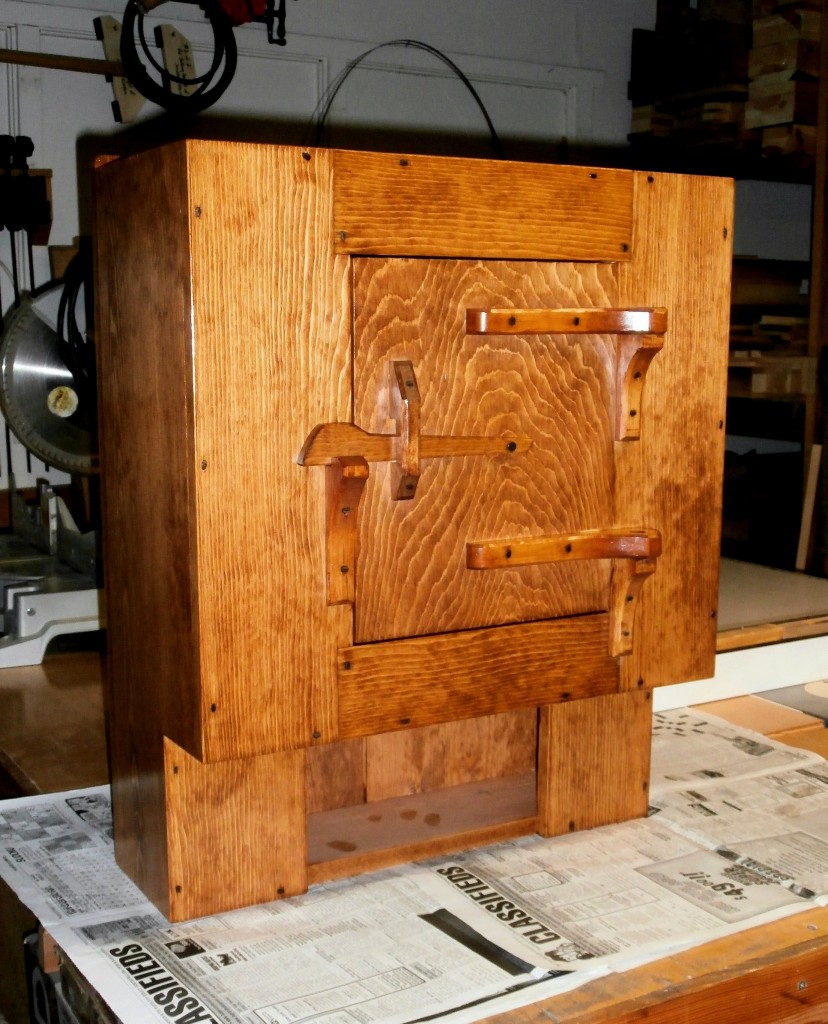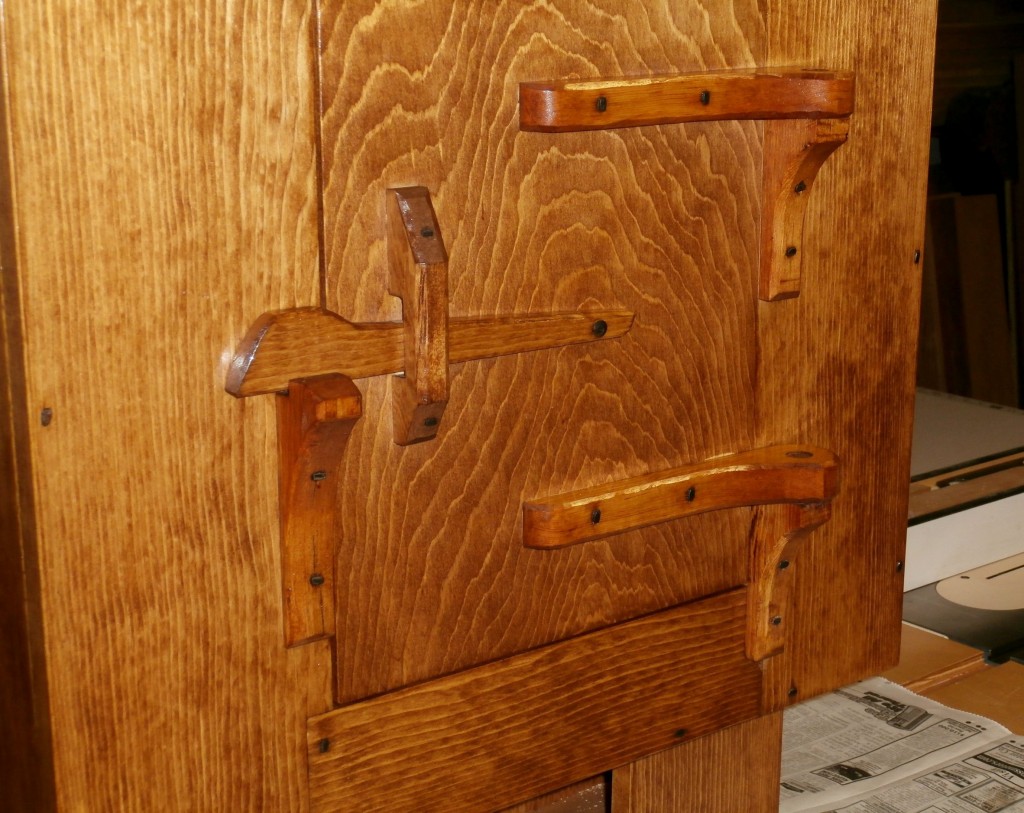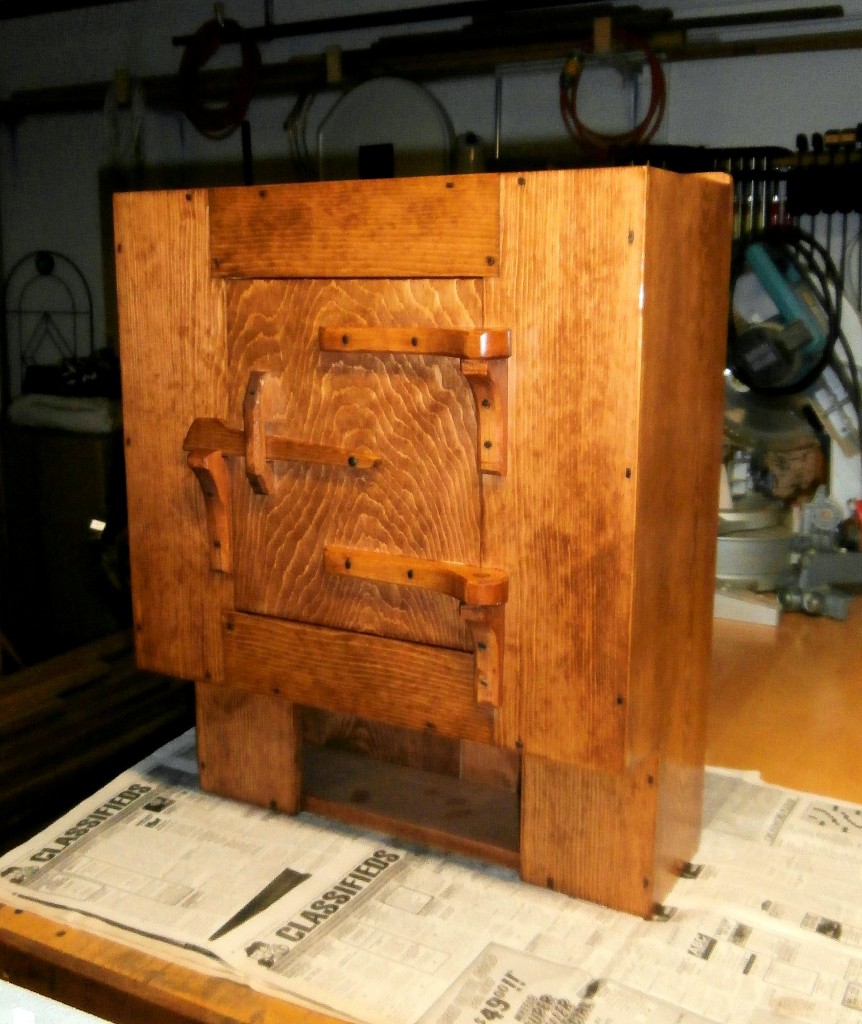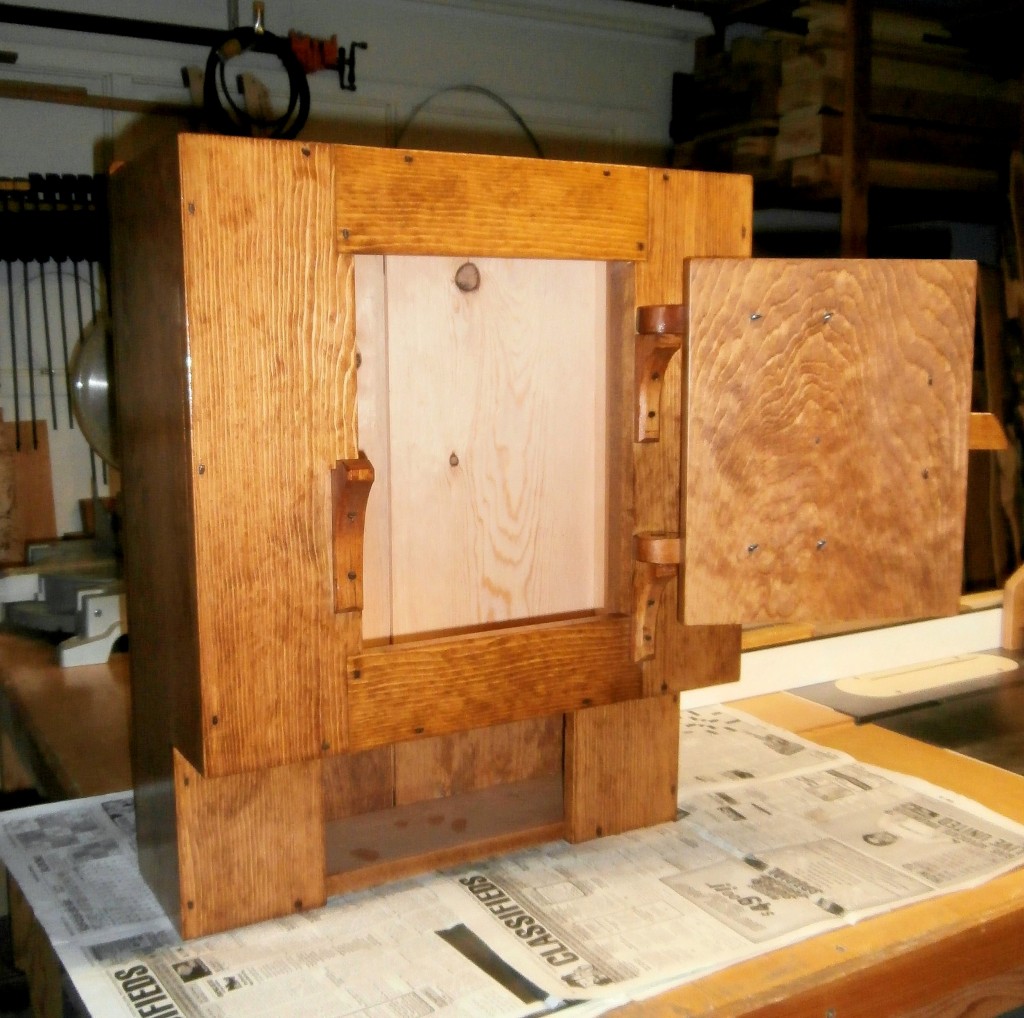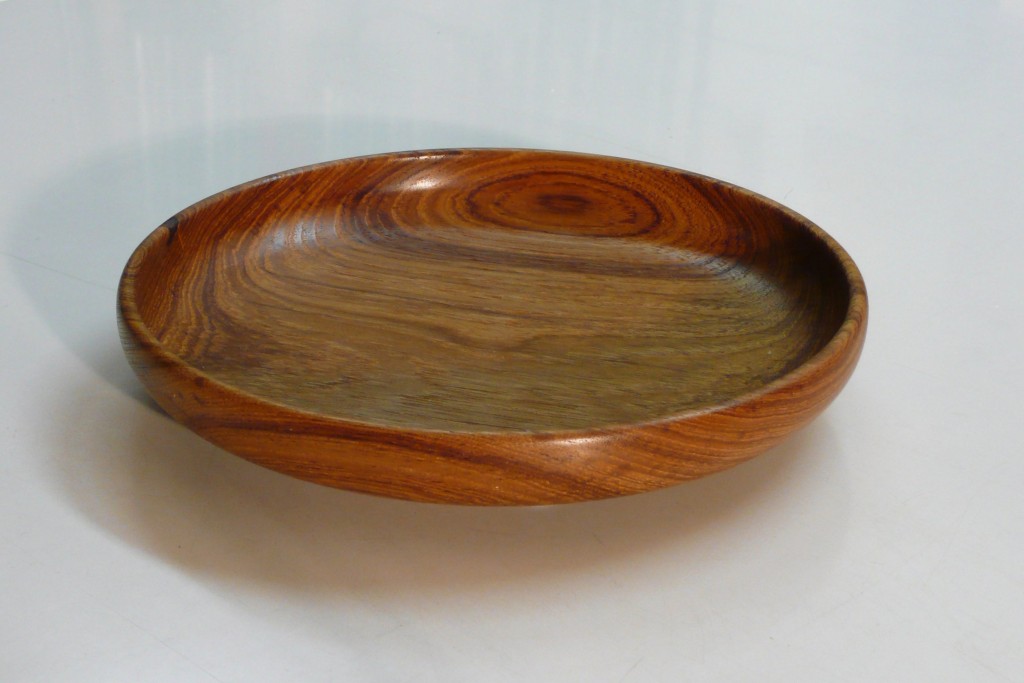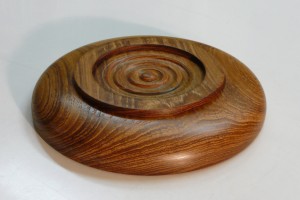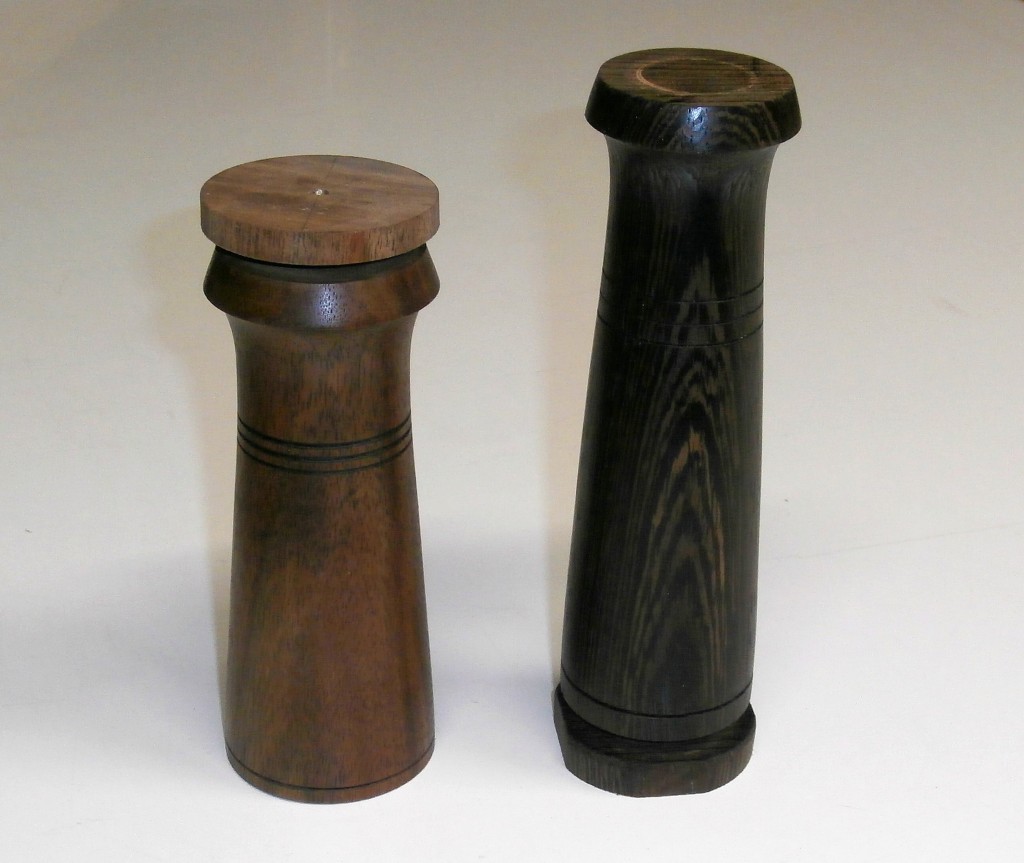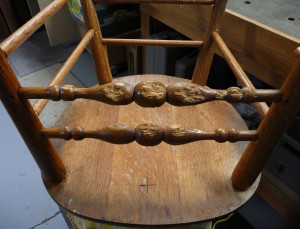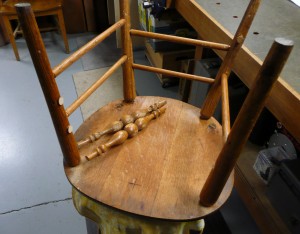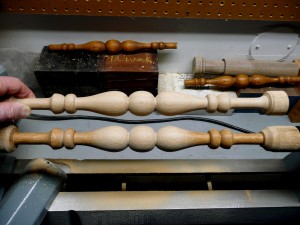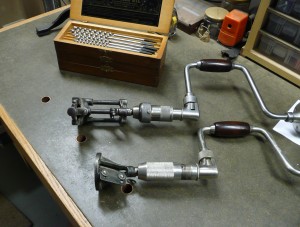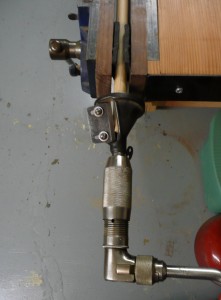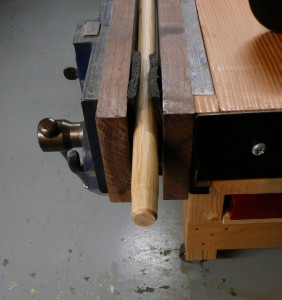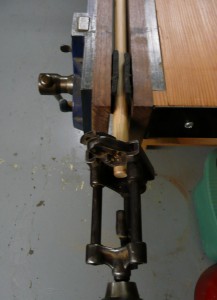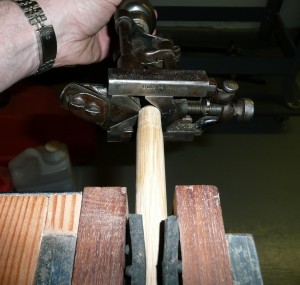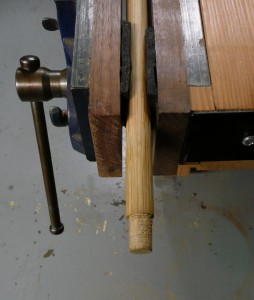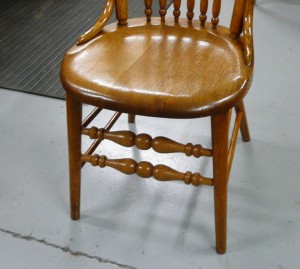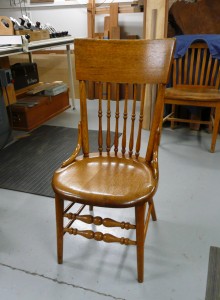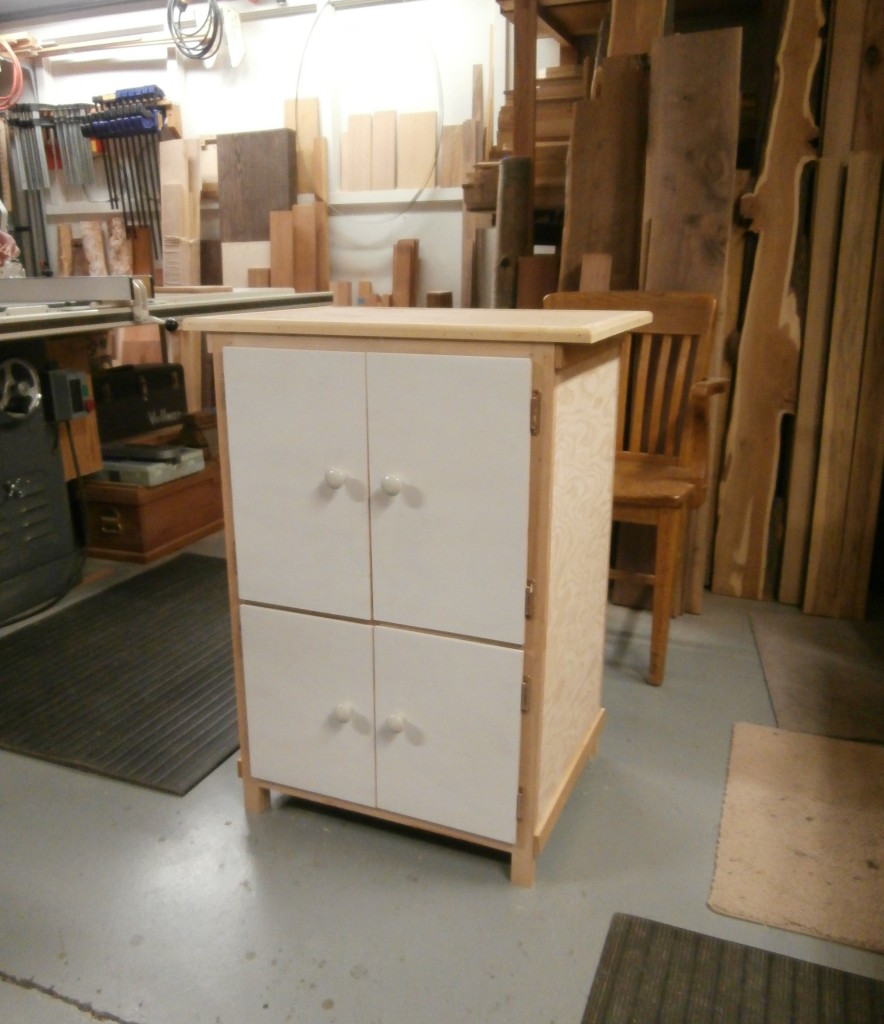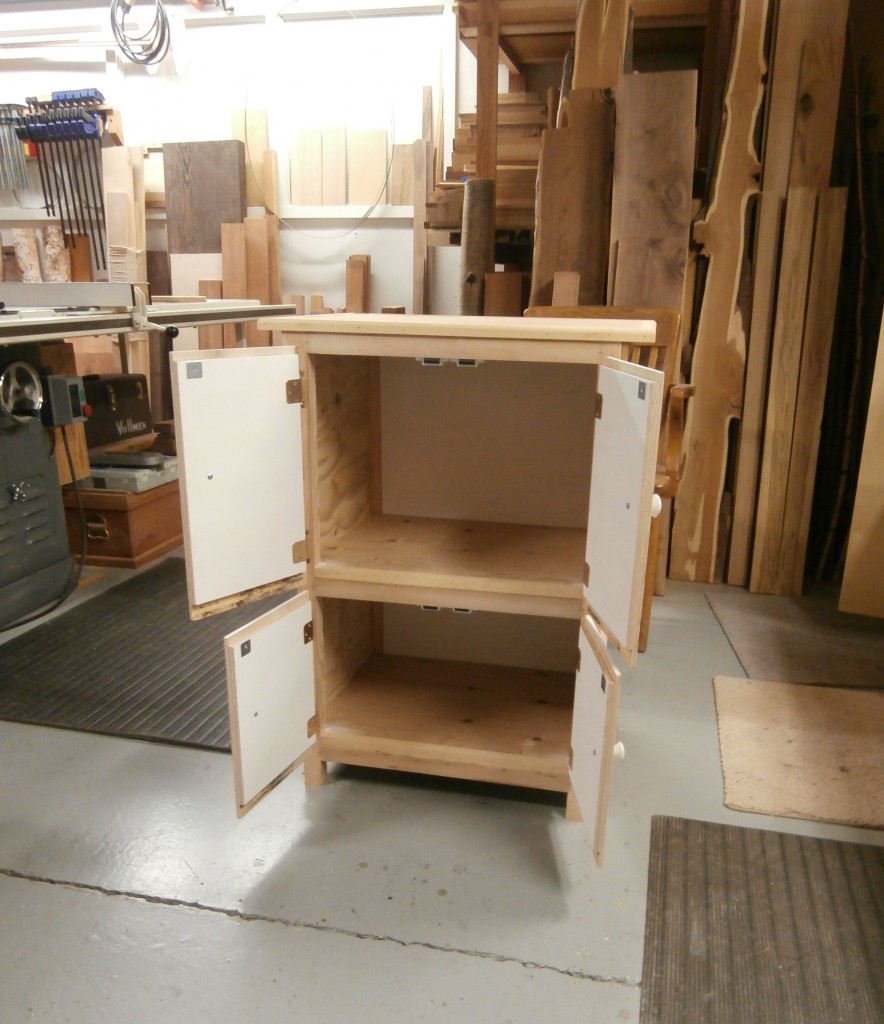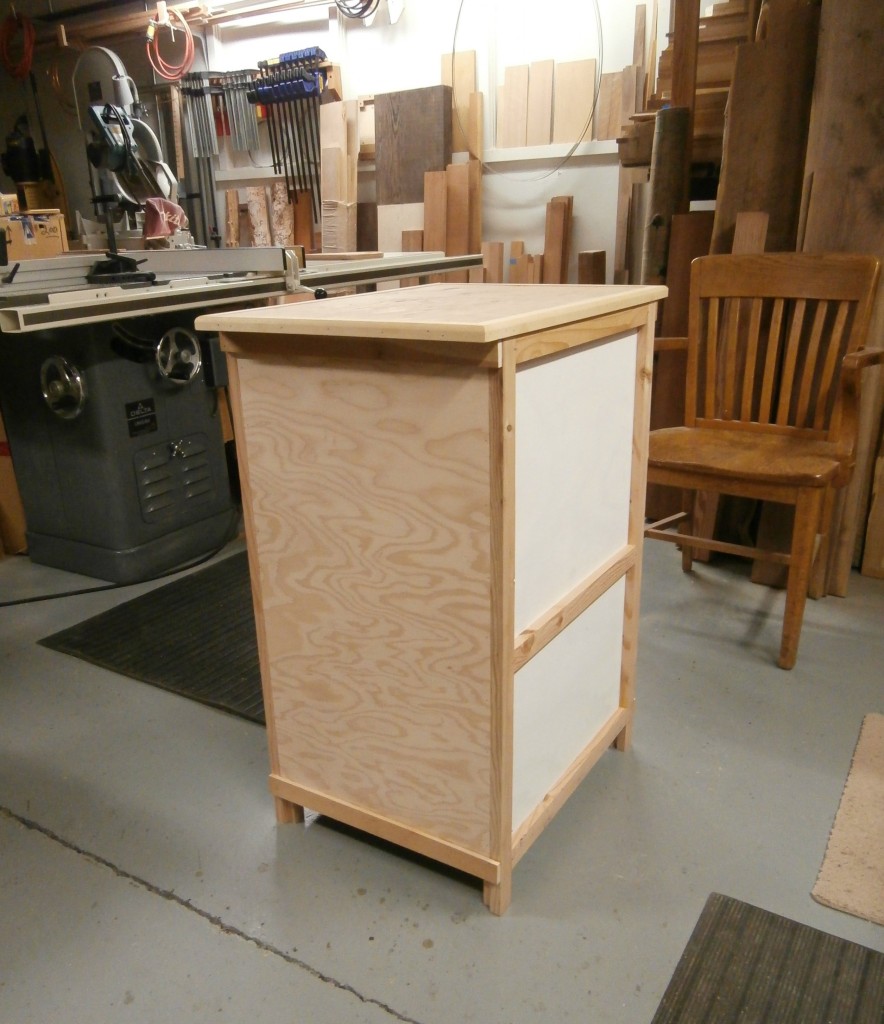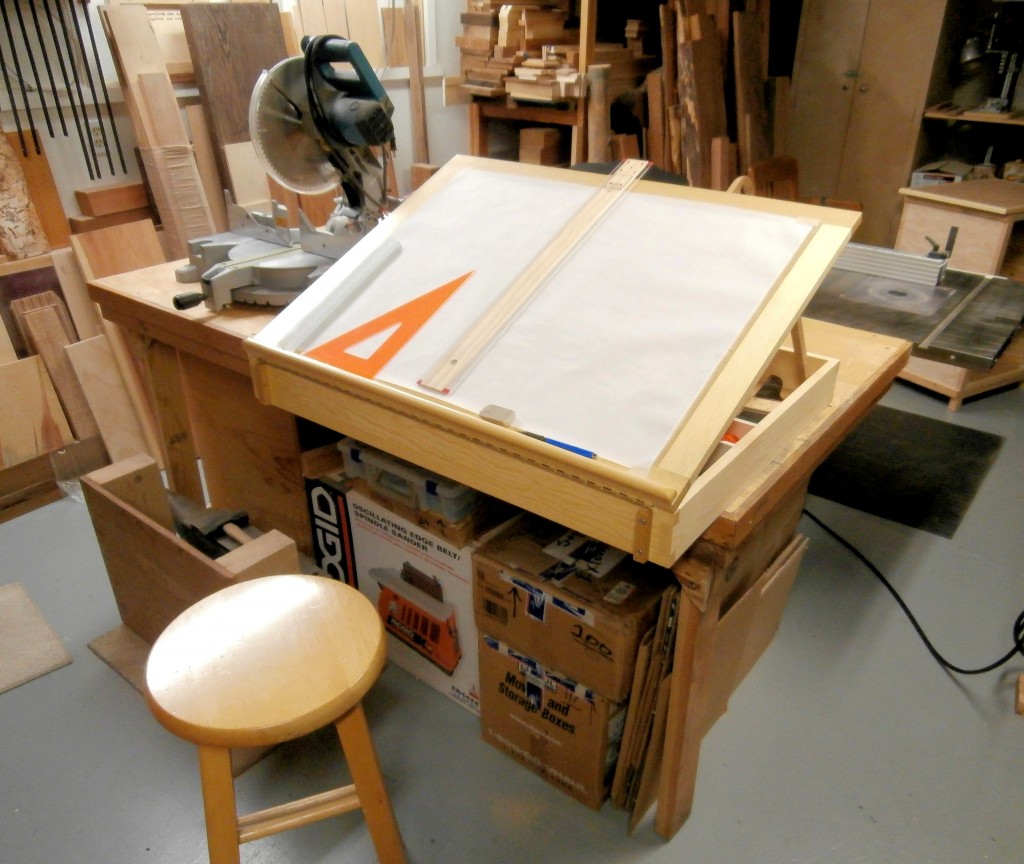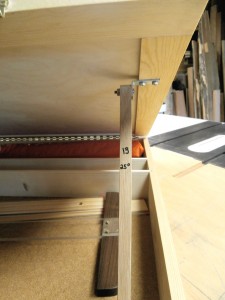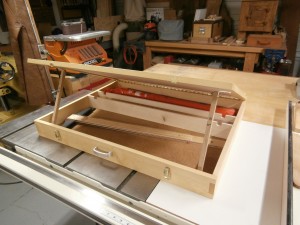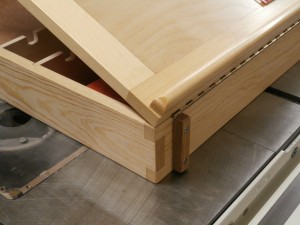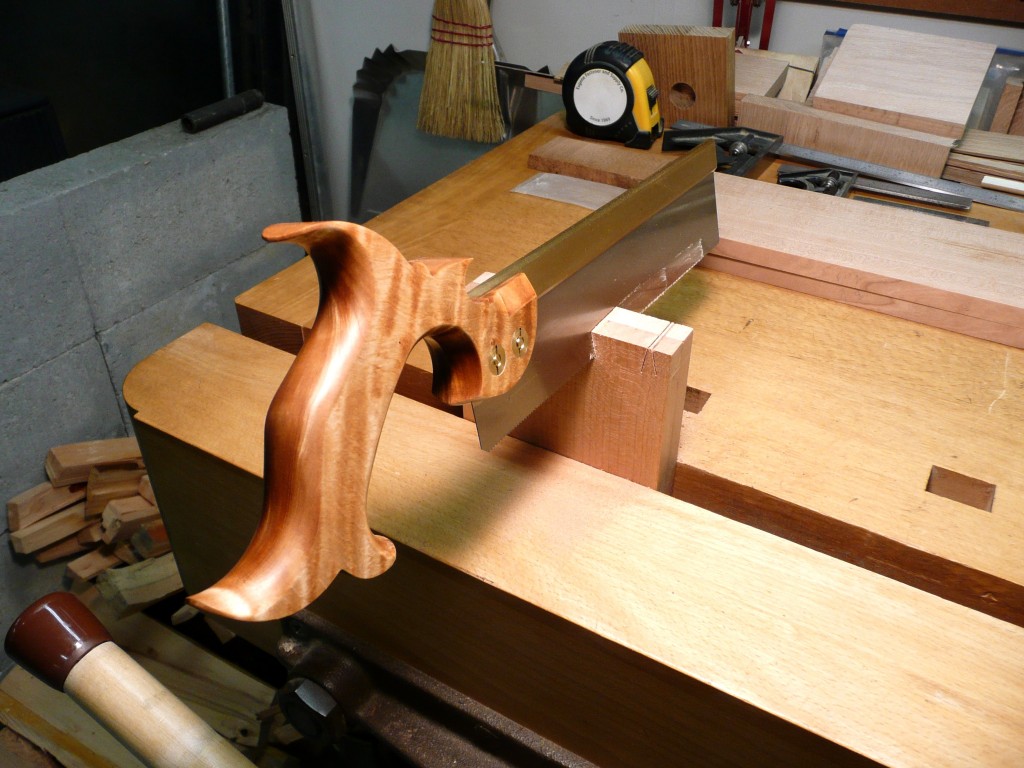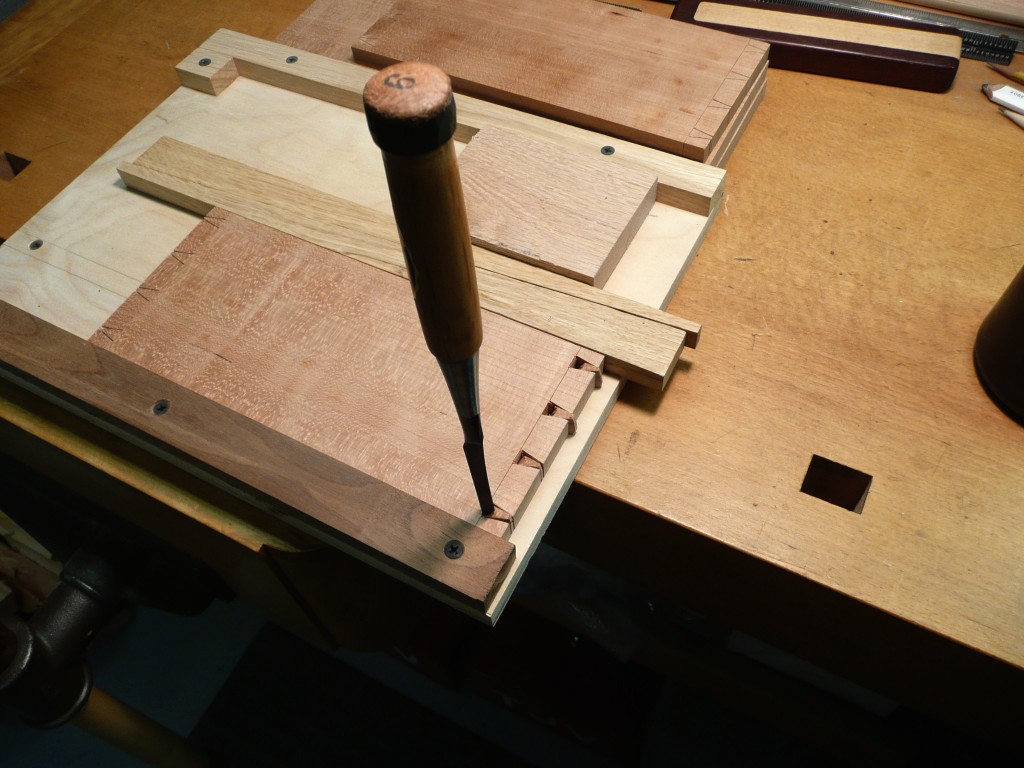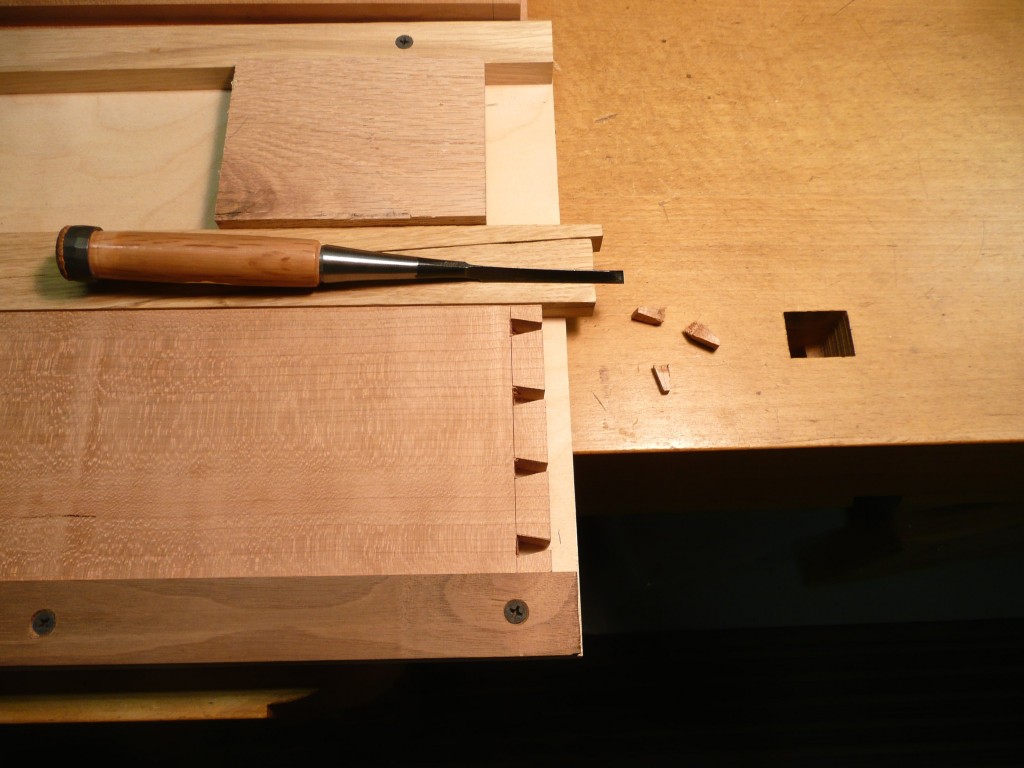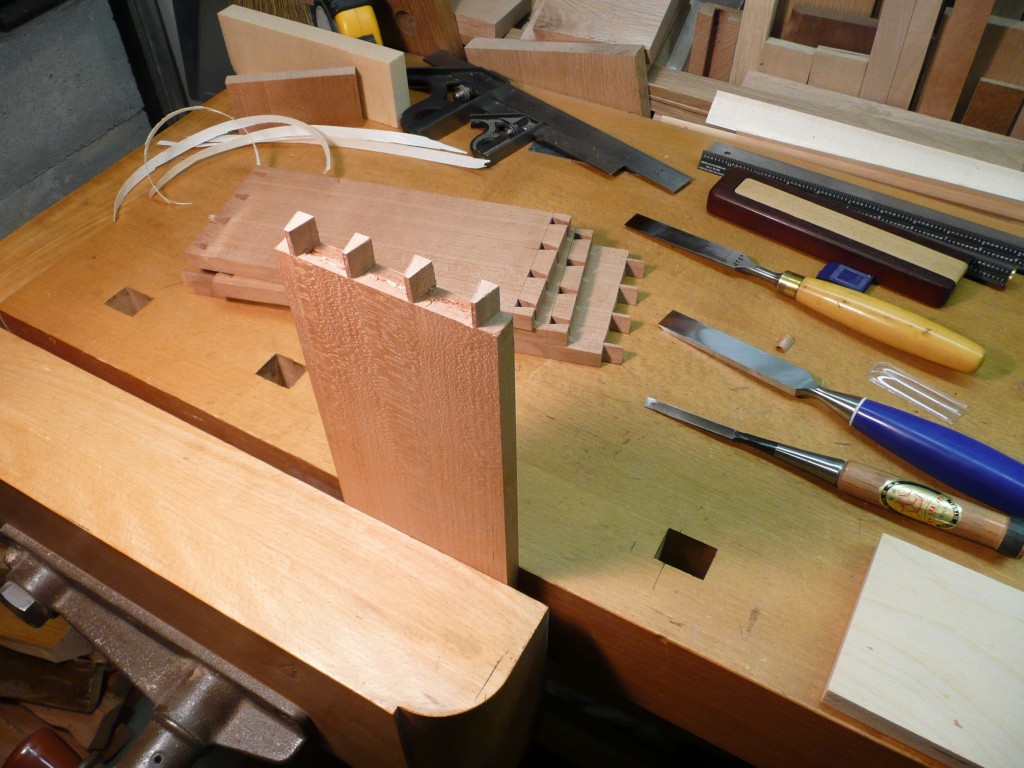This is an experimental piece, loosely modeled after an antique original. It gave me an opportunity to try some hand carved, chamfered “hardware” (hinges and latch), and to join the pieces making up the cabinet with traditional, square-cut nails. (Click on any image to enlarge)
Although it was not terribly difficult, the hinge pieces (pintle and strap) had to be sized properly to allow the door to swing open without binding, and for the door to close with even spacing around the door opening.
The latch “keeper” also had to be scaled in order for the latch to both close and “lock” in the notch, and to clear the notch when being opened.
The square-cut nails that hold the straps to the door are “clinched” (the points bent over) on the inside to avoid protruding, and to permanently secure the hinge straps to the door. The front, side, top and bottom boards are all clear pine, but the two ship-lapped back panels are lower grade lumber with knots.

